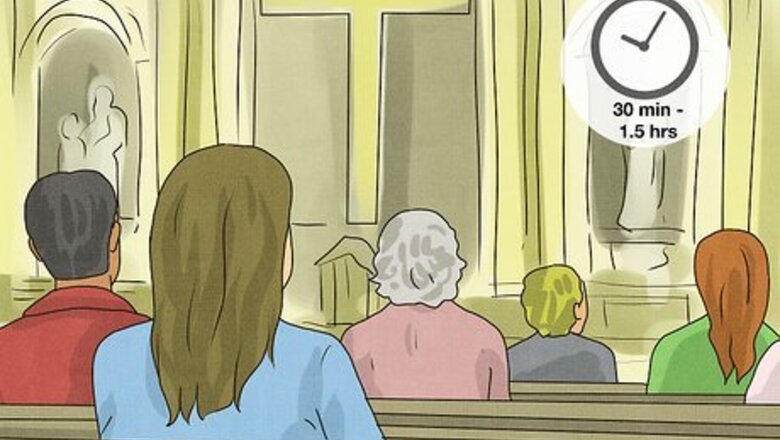
views
- Since Mass is considered a holy event, arrive early and wear formal clothing.
- Pass by the baptismal font quietly, enter the sanctuary, take a seat, and remain silent while the priest speaks.
- If you bring children to Mass, make sure to bring quiet toys so they don't disrupt the priest or parishioners.
- Participate in Mass by singing hymns, reading missals, standing and kneeling with the rest of the worshipers, and greeting others during the Exchange of Peace.
How long does Mass last?
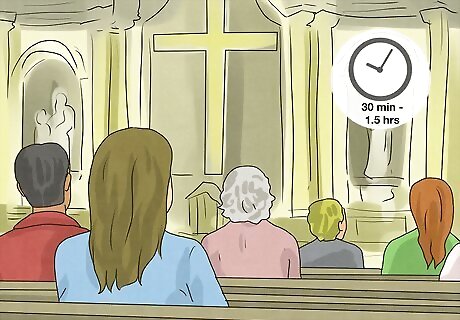
Mass usually lasts between 30 minutes and 1.5 hours. Since Sunday Masses and Easter Vigils are considered especially sacred, they are usually around an hour. However, some priests may lead a Sunday service that’s over 1.5 hours. Classical moral theologians—influential experts who focused on religious traditions in Christianity—suggested that 30 minutes was an appropriate amount of time for a weekday Mass. Classical moral theologians believed that a weekday Mass that was at least 30 minutes long conveyed respect and allowed congregants the chance to fully worship the Lord. If all elements of a weekday Mass are included, like preaching and prayer, services are typically between 25-35 minutes. Different priests may have their unique way of leading their congregations. Classical moral theologians generally agreed that a 15-minute Mass was too short and that this service should only be reduced to 20 minutes if absolutely necessary.
What are the different parts of Mass?
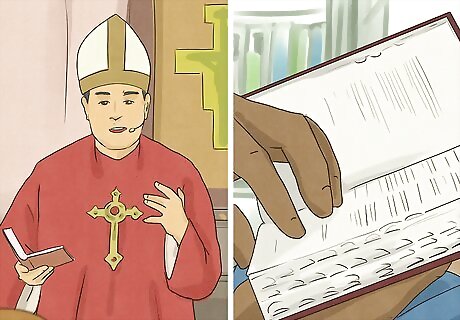
Mass has 4 separate parts—Introductory Rites, Liturgy of the Word, Liturgy of the Eucharist, and Concluding Rites. The Liturgy of the Word and the Liturgy of the Eucharist are considered the “main” parts of Mass, while the Introductory Rites and Concluding Rites open and close the service. Introductory Rites: An opening service that prepares worshipers to receive Jesus in the Word, the presence of God, and the Eucharist, the blood and body of Christ. Liturgy of the Word: A rite in which the priest helps congregants interpret, understand, and apply the Word of God. Liturgy of the Eucharist: A sacred tradition in which everyone in the church participates in the Last Supper, when Jesus dined with His disciples, and Mount Calvary, where Christ was crucified. Concluding Rites: An ending service in which the priest dismisses congregants and sends them back out into the earthly world.
How to Participate in Mass
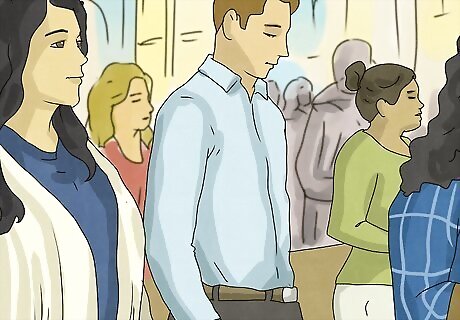
Stand and kneel with the crowd. At the beginning of the service, everyone will stand. Mass is an active event, so everyone usually moves a lot during the service. They’ll stand for some prayers and kneel for others. While knowing all the correct steps may be difficult to keep track of at first, simply pay attention to what everyone else does and follow their lead. The priest usually won’t tell you when to stand or kneel, so keep your eye on the parishioners.
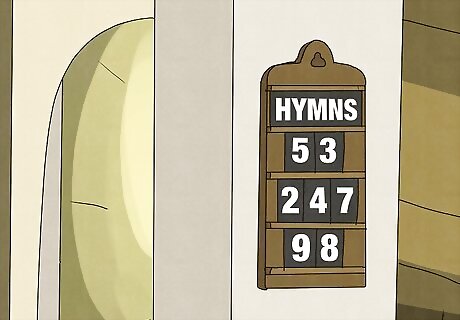
Look at the hymnal board to see what will be sung during Mass. Find the "hymnal board" near the front of the church where everyone can see it. Check for the number cards on this board, which correspond to the hymn numbers in the hymnal, a special book of songs. Unlike some services in other faiths, Mass encourages active participation. Feel free to sing along and build a sense of community with the parishioners. The parishioners join each other in song during the "Liturgy of the Word." The priest or another worshiper sometimes sings during prayers and readings. These songs are usually specially chosen for that specific day and won’t be in the hymnal. Watch everyone else to see if they sing along and follow their lead.
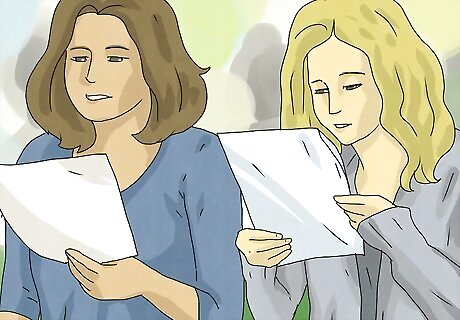
Find the hymnal and missal books in front of you. They’ll be on the backs of the pews. The hymnal is the one you use for the numbers on the front board. Turn to the right number in your hymnal and sing along. Missals contain the readings and prayers used throughout the service. Reference the books to follow along as best you can. The priest will guide you in interpreting and learning from hymns and missals during the "Liturgy of the Word." The full text of the readings will usually be printed in the missal, along with the responses the congregation says aloud. Anytime you feel a little lost or unsure, it’s completely fine—just follow along by listening instead of focusing on the books.
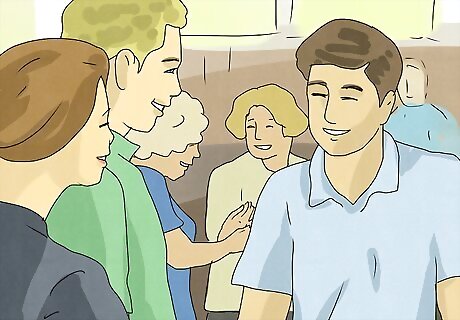
Greet others during the Exchange of Peace. The “Exchange of Peace,” a quick greeting worshipers and visitors give each other, happens after the Lord’s Prayer (which starts with the “Our Father”). The priest usually says, “Let us offer one another a sign of God’s peace.” At this point, stand up and shake hands with the parishioners near you. Accompany each light handshake with the phrase “peace be with you.” In some countries or regions, such as Asia, a bow or nod is more acceptable during this event. Take note of how the other worshipers give their Exchange of Peace.
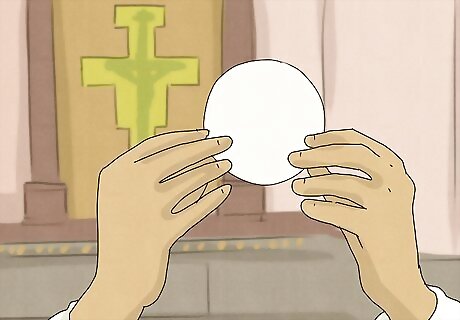
Stay seated during Communion. After the priest prepares the altar and consecrates the gifts, the congregation takes Communion. If you are Catholic, then you’re encouraged to receive Holy Communion, a rite where worshipers consume consecrated wafers (hosts) and drink consecrated wine that Catholics believe to be the true Body and Blood of Christ under the appearance of simple bread and wine. If you're not Catholic, don't participate in Communion as you would not believe in the True Presence. Let the communicants pass, moving out of the aisle if necessary. As they line up in front of the priest, sit down and let everyone back in when they return. Catholics receive "Holy Communion" during the "Liturgy of the Eucharist." In many English-speaking countries, non-Catholics can join the Communion queue and receive a blessing rather than take Communion. Cross your arms in an X over your chest with your closed fists touching your shoulders as you reach the priest.
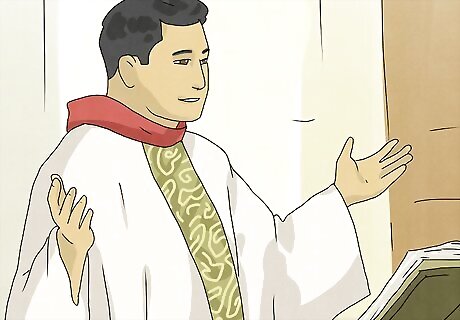
Wait until the congregation is dismissed. After Communion, there will be a few more prayers before the priest blesses you to leave. At this point, everyone stands and files back out of the sanctuary. Practicing Catholics will genuflect again towards the tabernacle as they leave their seats. Quietly walk out as this happens.
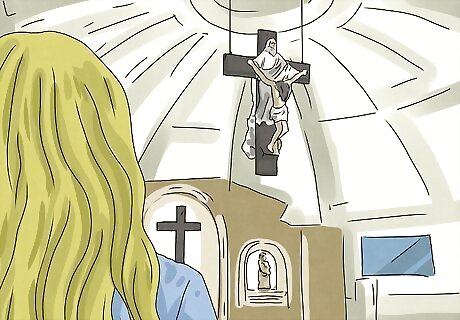
Respectfully appreciate the art in the church. After Mass, feel free to look at any of the beautiful statues, paintings, and other artwork inside. These are not idols and Catholics do not pray directly to them. While they may appear a little unfamiliar to you, many Catholics recognize them and view them to reflect on their faith. Some icons have candles before them. You can light a candle to pay homage to these important figures in the Catholic tradition.
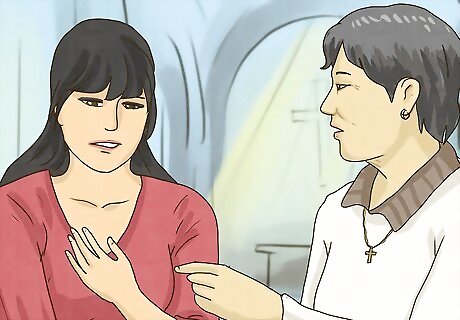
Ask the church members any questions you have. After the priest has performed the "Concluding Rites" and Mass ends, some church members will stick around to talk to each other. Feel free to greet them and discuss what you’re curious about. The priest will also be available to speak with everyone in the church. If you prefer a private discussion, schedule a time to talk in the “rectory,” a private building attached to the church where the priest lives. For example, you can ask, “What do you use holy water for?” or “How do I become a Catholic?”
Etiquette for a Catholic Mass
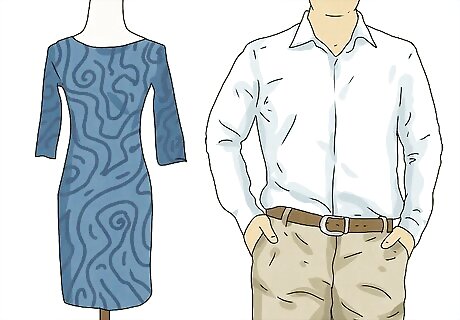
Dress in formal clothing. Mass is meant to be attended in your Sunday best. While the church welcomes everyone regardless of their attire, it’s very respectful to look well put together. To honor this holy event, dress appropriately and wear a modest outfit like a dress and a cardigan or a button-down shirt with slacks.
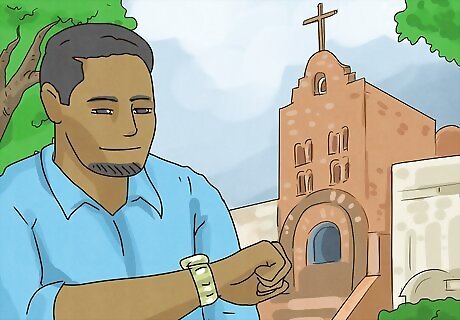
Come a few minutes early. Get to the church at least ten minutes early. You’ll probably feel much more comfortable if you find a parking spot easily and have a chance to sit wherever you want. Arriving before Mass begins also gives you an opportunity to talk with the parishioners. Once you step inside the main room of the church, remember to speak as quietly as possible. Arrive early and before Mass starts if you need to check in with someone or ask any questions. See if your church has any specific guidelines about talking once Mass begins.
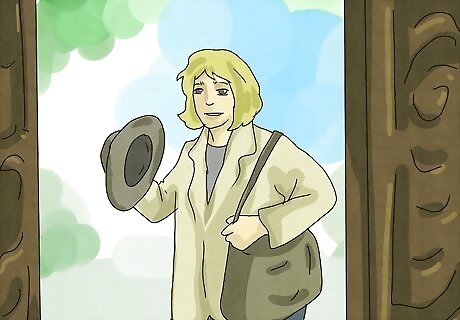
Take off your hat when entering the church. Taking off your hat is a traditional gesture of respect. A good rule of thumb for how to act in church is to behave the same way you would at school, work, or any other formal venue. Men are typically expected to remove their hat. If you’re a woman, dress hats are acceptable, but make sure to remove casual headwear like baseball caps.

Avoid bringing food or drinks into the church. If you are with a small child or someone is easily dehydrated, it’s completely fine to bring water. Eat before you head to church so you don’t need to bring food. Food distracts from worshiping, and it’ll be easier to focus on Mass if you’re not munching on some snacks. If you want to freshen your breath or keep yourself awake, pop in a couple mints instead of chewing gum.

Turn off your phone. To make sure you and everyone else enjoys the beautiful rituals of Mass, power your phone off to keep it from ringing. If you’re waiting for an emergency call, put it on vibrate mode. It’s okay to discreetly use your phone to follow along with readings and prayers, but this is usually isn’t necessary. If you have to take an urgent phone call, walk out of the church first. Most churches have physical materials you can read rather than digital media you need to open on your phone.
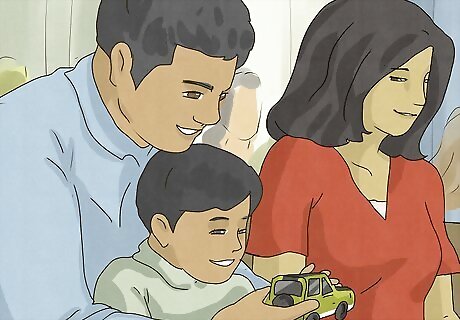
Bring toys for small children. If you have kids that are under 4 years old, it might really help to bring along toys and coloring books. They’ll be so occupied with these fun distractions that they’re a lot less likely to get restless during Mass. Once you think they’re ready to listen and participate in the Mass, start leaving the toys at home. You can begin teaching young children the importance of Mass by giving them special clothing or toys that are reserved for church days. Provide toys that won't make a lot of noise. For example, give your kid a stuffed animal instead of a toy truck that makes sounds and flashes lights when you hit a button. If you have a child that might get a little chatty, sit in the pews at the back of the church so you can step outside if you need to.
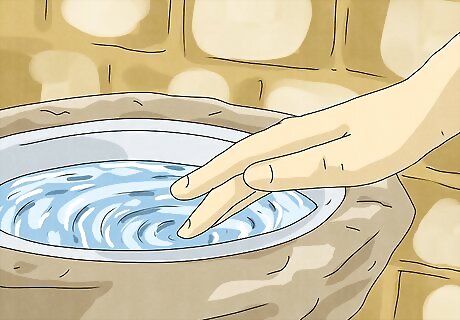
Pass by the holy water font quietly. At the church entrance, you’ll notice parishioners dipping their fingers into a container of water, which is called the “holy water font.” This source of holy water is a reminder of baptism. Walk by it and remain silent and respectful in case anyone is praying. Anyone is free to use the font, so you can try blessing yourself by making the sign of the cross.
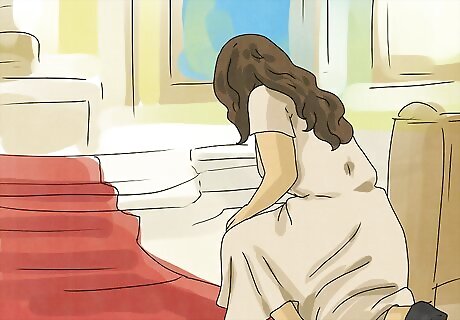
Wait for others to genuflect as they enter the sanctuary. At the front of the sanctuary, you’ll find the “tabernacle,” a box that contains the Eucharist, which is the bread and wine Catholics believe becomes the body of Christ. Here, parishioners will “genuflect,” which means they’ll go down on their right knee or bow as a sign of respect and thanksgiving for the sacrifice Jesus made. You may genuflect with everyone else or simply walk into the sanctuary and find a seat. To genuflect, go down on your right knee and lower yourself as far as you can. If you have any issues with your knees, it’s completely acceptable to bow instead.
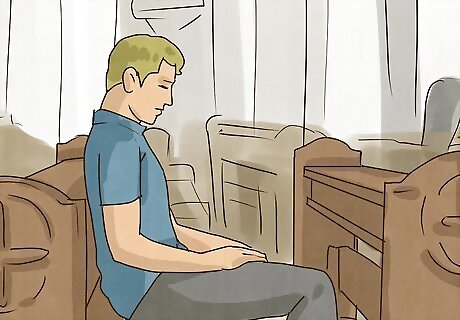
Sit anywhere in the pews. You’re welcome to sit anywhere you like. Consider sitting closer to the front if you would like to watch all of the rites. An end seat is a great choice since you’ll be able to let everyone else out during communion. If you pick a pew with people sitting in the middle, you won’t have to worry about letting anyone in. If you’re bringing small children, a back pew works best. This allows you to make a quick escape with a talkative or playful kid.












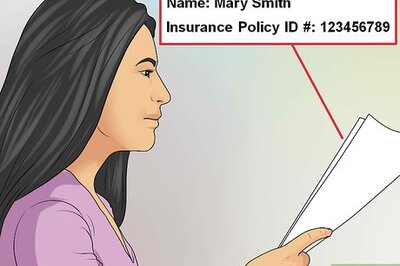






Comments
0 comment